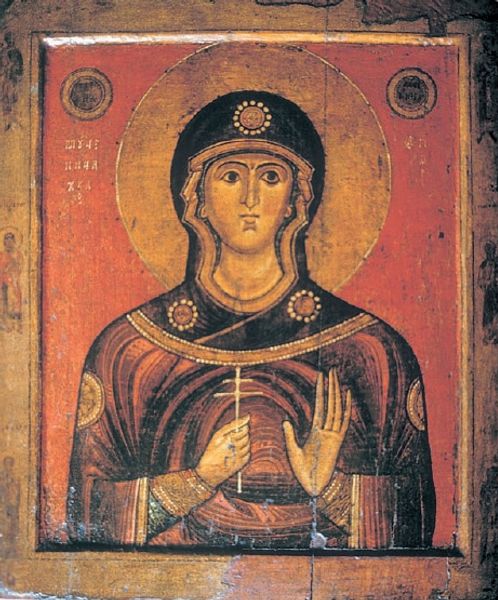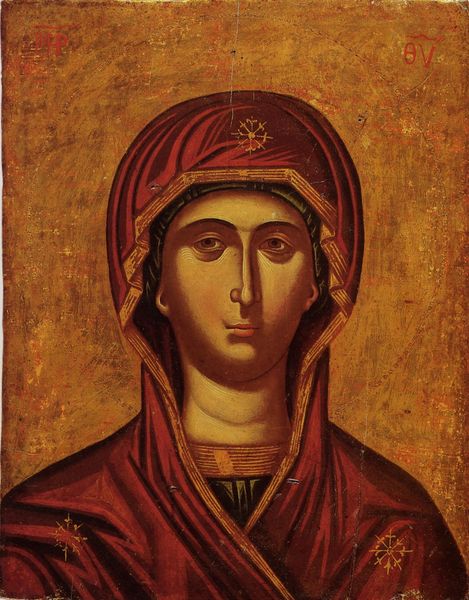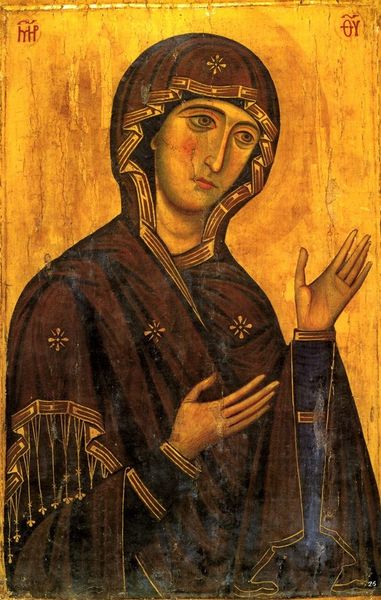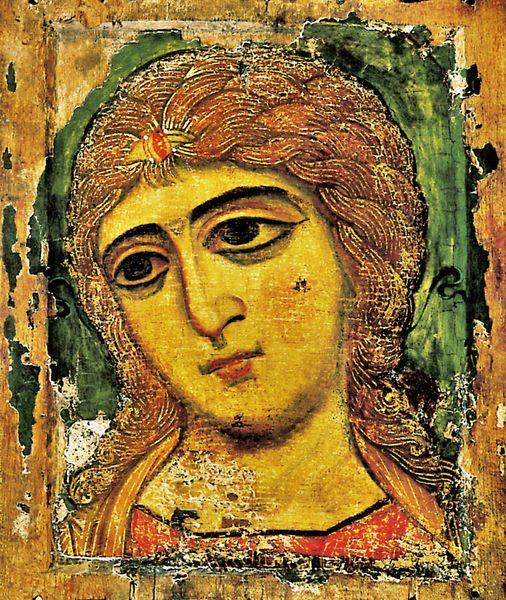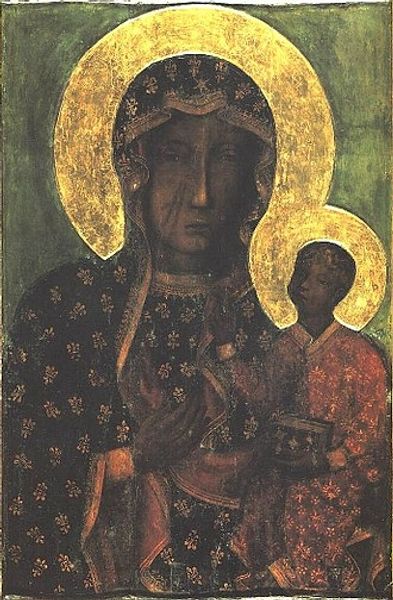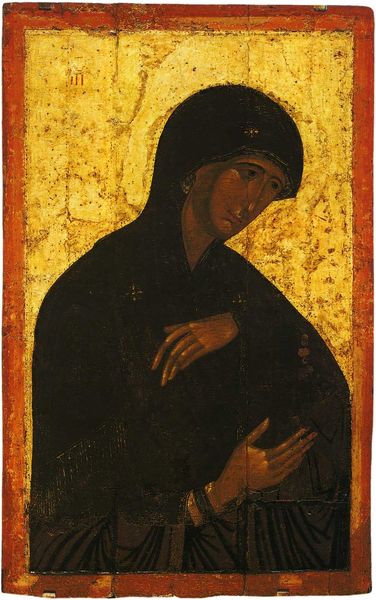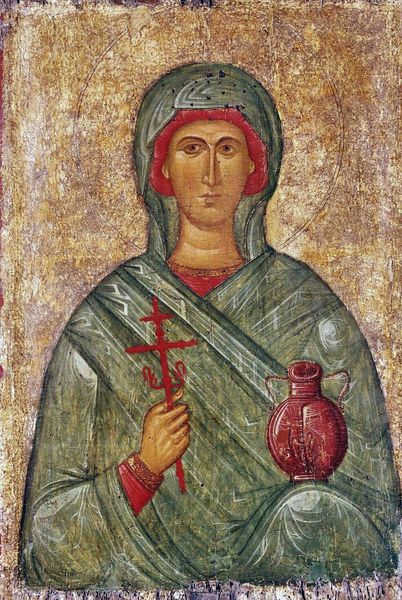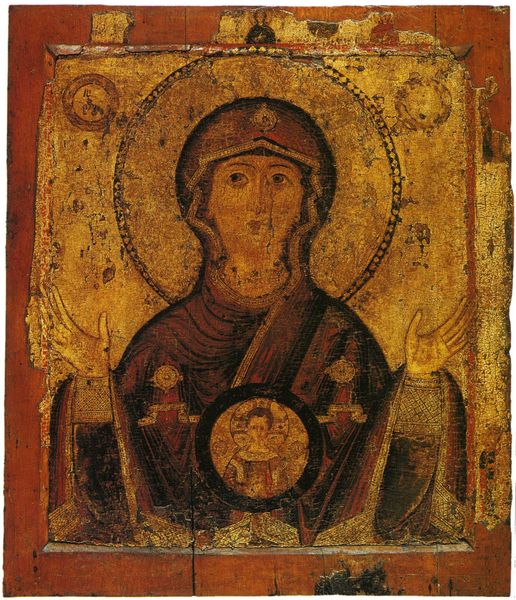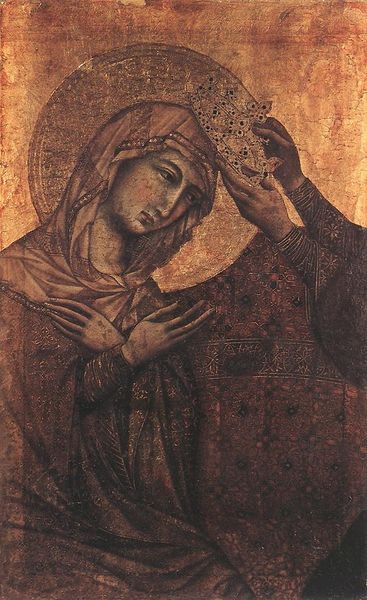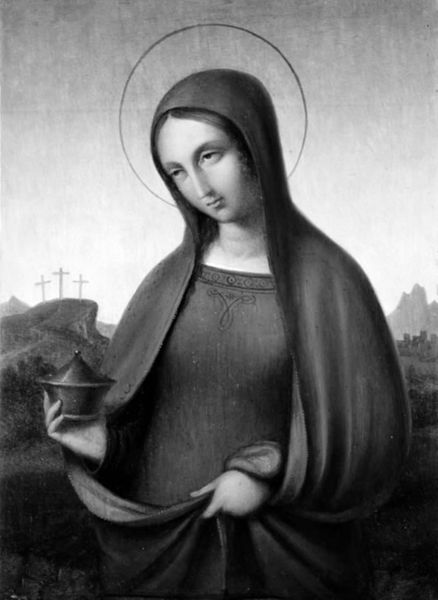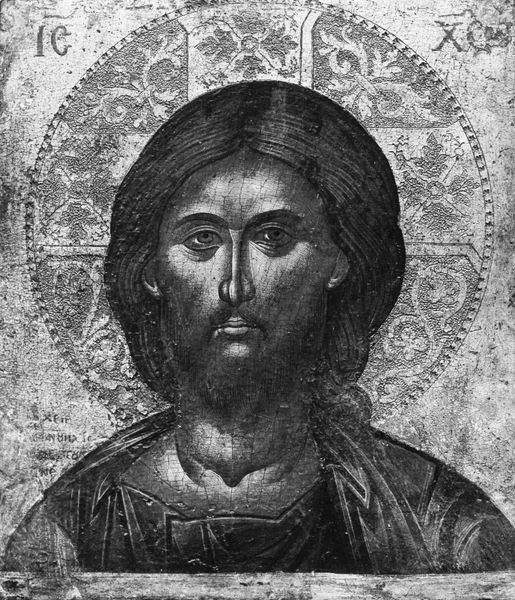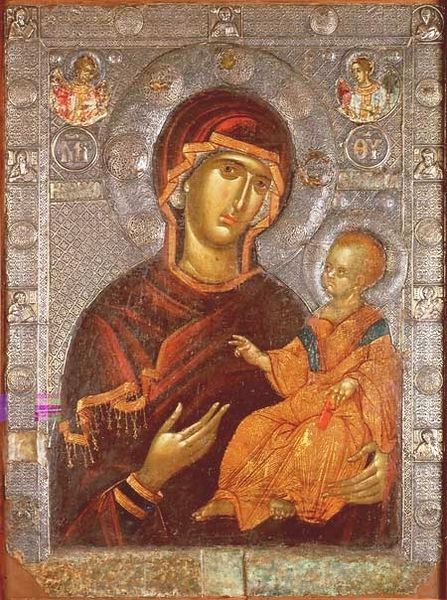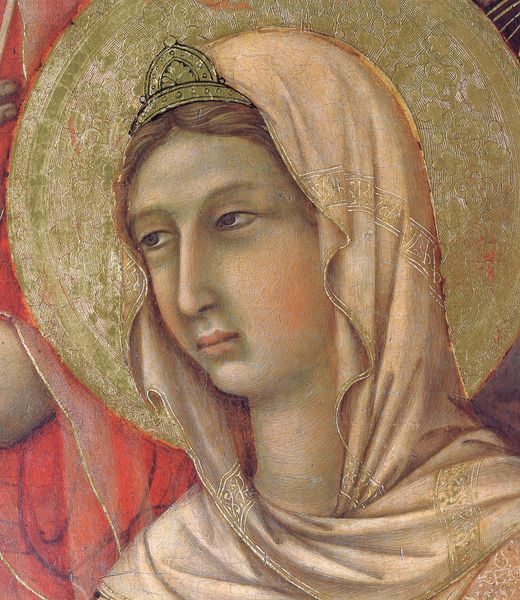
tempera, painting
#
portrait
#
byzantine-art
#
portrait image
#
tempera
#
painting
#
portrait reference
#
portrait drawing
#
portrait art
#
virgin-mary
Dimensions: 8 3/8 x 7 1/8 in. (21.3 x 18.1 cm)
Copyright: Public Domain
Curator: Here we have "Head of the Virgin," a tempera on wood panel, likely created sometime between 1636 and 1690, attributed to Emmanuel Tzanès, and held in the collection of the Metropolitan Museum of Art. Editor: There's a captivating somberness about it. The heavy, dark veil frames a face marked by such deep, knowing eyes. The delicate halo contrasts against what seems to be damage to the artwork itself. It gives her image such profound meaning and pain. Curator: The cracks that run across the surface speak volumes, don’t they? This isn’t merely damage; it's the physical embodiment of history and the life it has endured, both material and spiritual. It underscores how these devotional objects were part of everyday experience for so long. Editor: Absolutely. Considering the composition, the subject, centrally positioned with the gaze slightly downward, immediately connects us to her humility and almost asks the viewer to recognize her wisdom in all this. Curator: Tempera’s unique qualities—how it sets quickly, the labor it required—are critical to understand its social context. Artists like Tzanès navigated established iconography but also local patronage and workshop dynamics, responding to specific devotional practices and market pressures within their own specific community. Editor: True, but look closer: the artist’s command over form! The subtle play of light and shadow to model the face, the lines in the veil creating texture and space that make me consider both depth and piety through form alone! Curator: And let's not overlook the standardization of iconography and artistic creation common for Byzantine art as a production system, creating certain limitations while ensuring wider dissemination. The reproduction of sacred art enabled access but also reinforced structures. Editor: All this detail converges to evoke a really specific mood, one that speaks volumes, even transcends specific theological views, to deliver a unique spiritual idea in portraiture. Curator: I’m struck by how much the materiality here informs her endurance, it's more than devotional-- the history etched on her face mirrors the history of those who prayed to her. Editor: I appreciate seeing her form—her design—allowing me a look through time as her compelling composition allows. It creates that captivating, somber expression.
Comments
No comments
Be the first to comment and join the conversation on the ultimate creative platform.
